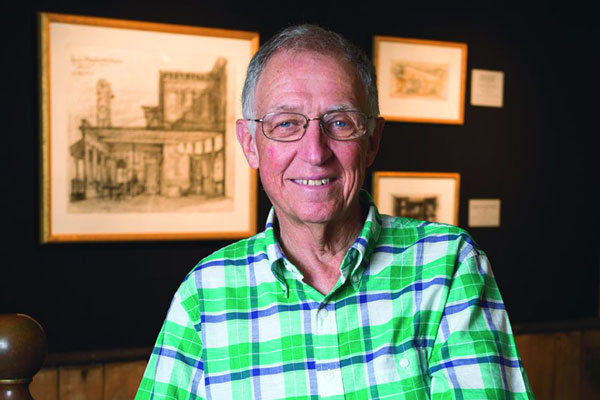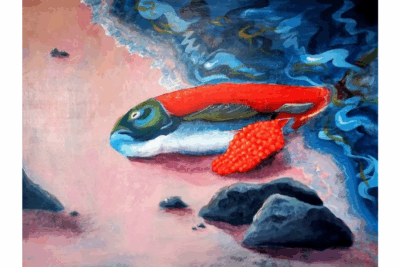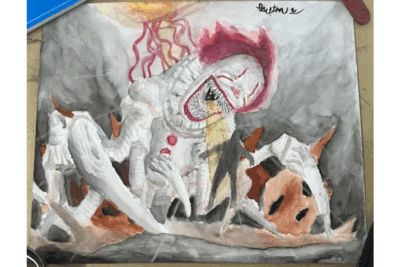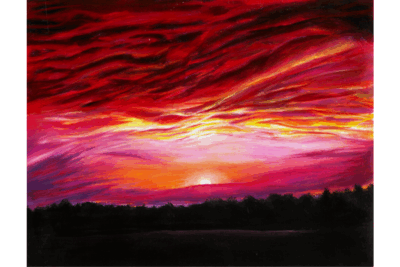The visual art and theater departments of Goshen College have teamed up to bring notable theater designer Karl Eigsti to campus. Eigsti has worked in American theater for over 50 years, and has been involved in 20 Broadway productions. The designer has worked with costume and lights, but his primary focus is set design.
Just after finishing his master’s degree in theater from the University of Bristol, England, Eigsti became the resident designer at the Arena Stage in Washington, D.C. The Arena Stage features a tiered theater designed in the round, meaning the audience surrounds the actors on all sides.This style of stage makes design difficult because the designer must think in 360 degrees, making sure the actors are never obscured by the set pieces. This design style came natural to Eigsti, however, because round stages were prevalent during his studies in England.
One of the sets Eigsti designed in the round was for Arena Stage’s 1974 production of Death of a Salesman. The set featured objects that appeared to be floating, suspended from the rafters.
“We wanted to make this play atmospheric, a dream play, a surreal image…like a Dali painting,” Eigsti stated in a 2001 interview with Theatre Design and Technology magazine.
Eigsti’s dark and desolate sketch of the set accurately conveys the brooding, psychological feel of the play. When the playwright, Arthur Miller, came to watch the Arena Stage production, he said, “This is the way I imaged [the set] in the first place.”
So, how did Goshen College become connected with such an esteemed designer?
“Karl himself is not a Goshen alum, but his parents are,” said Doug Liechty Caskey, professor of theater, “and the Eigsti track and field is named after his dad…Karl still has family in the area.”
Another connection to the set designer is GC theater alum Jessica Milne, who studied costume design with Eigsti at Brandeis University in Massachusetts. “We had been talking for several years about the possibility of bringing in Karl, specifically because of his many Goshen connections,” said Caskey.
Both the theater and visual arts departments are excited for Eigsti’s visit, partially because of the opportunity for collaboration.
“It’s the intersection of our two disciplines,” says Randy Horst, professor of art. Set design combines theater and visual art, making “the visual component of the exhibit possible, which is not something we’ve had in the past.”
Usually the two departments bring in speakers with their respective endowments, the Umble Master Class for theater and the Eric Yake Kanagy Visiting Artist Program for visual arts, but for this event, the departments pooled their resources.
“It’s the first time that these two funding sources have cooperated between art and theater,” Caskey said, “and it’s not business as usual, which is very cool.”
Eigsti will be on campus from Jan. 31 through Feb. 3, delivering a lecture and speaking in art and theater classes. All sessions, including classes, are open to the public and the broader student body.
“It’s the three days after that keynote where it’ll get more interesting,” Caskey says, “because we’ll engage with him in conversation.
Eigsti’s design concepts will be on display in the Hershberger Gallery from Jan. 22–Feb. 26. Eigsti will deliver his lecture, “What Exactly Do Designers in Theater and Film Do?” on Jan. 31 at 7:30 p.m. in the Umble Center. Convocation credit is available for this event.



